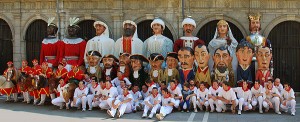“On my dad’s side of the family there’s about 50 people. He’s the youngest of 7 kids and they have kids and even they have kids. So it’s like three generations of people. We use to do a gift exchange where we drew names with a price limit according to the generation. But now we have a new tradition where we donate to charity instead. We keep the same price limit, $40 for my dad’s generation, $30 for my age group and so on. So like my generation would pull $30 from everyone in that age group. Each age group pulls their collections into a group. And then each year, it rotates between the seven siblings, their family decides where the donations go to. So this year will be my dad’s ‘turn.’ My dad and mom will choose where their age groups donation is going to. And then my brother and I will pick where the money is going to for the collection from our generation.”
I find this tradition interesting because in the last few decades, with globalization there has been a movement towards more humanitarian actions. People have become more aware through media of human rights, health issues, natural disasters, and other struggles communities and groups are facing. This family tradition of my roommate reflects this awareness. Because her family is made up of so many members they are able to make a sizable contribution. They are definitely focusing on the theme of giving during the American “holiday season” and not of receiving. It goes against what the Christmas tradition has morphed into with the consumer culture that has developed in American and Western society. It’s also great that they involve the younger generations as well and teach them this selflessness from an early age.

